
Your website is the powerhouse of your school’s student recruitment efforts. It’s where prospects go to find information about your school, and it’s where you gather their contact information in return. Just as the importance of a school’s website can’t be understated, so is the need to make sure that these leads are properly organized, categorized, and guided further down the funnel.
By integrating your school’s website with a customer relations management (CRM) system, you can optimize these lead conversion activities – to the benefit of both your prospects and your staff. From efficiency to effectiveness to enhanced communication, there are plenty of ways that this process can improve recruitment.
If you haven’t integrated your school’s website to your CRM, or if you don’t yet have a CRM, this blog outlines why you should.

1. Increasing Efficiency with a CRM for Schools
Every school wants to increase its lead flow – especially at peak recruitment season. While an influx of new leads is certainly exciting for education professionals, having to import excel files, copy and paste data, and train new staff to do the same is not.
However, by integrating your website with a CRM, you automize this administrative activity so your team can spend more time connecting with these prospects and less time juggling data.
This integration automatically adds any new leads you generate on your website – whether they fill in an inquiry form, submit their contact details when downloading a resource, or sign up for your mailing list– to your CRM database. There is no need to manually import a list of contacts: your CRM does that for you.
Example: A snippet of a school’s contact database in Mautic, HEM’s customized CRM for the education sector. Mautic CRM enables schools to monitor lead flow, assess contact properties, and examine a prospect’s stage in the enrollment journey – all on one page.

As a result of this integration, you only need to log into one system to manage your school’s website, as well as other digital channels, making it easier to train new staff responsible for recruitment. Additionally, you’ll never have to worry about duplicate or missing data, as all your information is consolidated in one platform.
2. How an Education CRM Can Enhance Communication with Prospects
Integrating your school’s website to a CRM grants you immediate access to the most recent information. Accurate and up-to-date data is a valuable recruitment tool for schools, allowing staff to follow up with leads quickly and personalize communication.
Information goes from your website to your CRM instantly, updating in real time. There’s no need for your school to worry about whether the leads you generated a week ago were imported to your CRM for follow-up.
Example: The contact database in HubSpot, a popular CRM and marketing automation platform. Notice how this dashboard highlights the date the contact was created, as well as each individual’s last activity.

By integrating your website to a CRM, and having the latter update in real time, you can then create and send autoresponders to prospects the moment they submit a form on your website.
Example: An email workflow in Mautic that sends different autoresponders to prospects based on their program of interest.

Having access to the most up-to-date data also helps enrich the conversations you have with prospective students.
Let’s say a prospect makes an inquiry, and right before you’re about to call them to follow up, they sign up for a webinar. That information will automatically appear in their contact profile, allowing you to highlight the value they’ll get out of attending the event during your phone call. The more information you have about a prospect and their interactions with our school, the better.
The same goes for demographic information. If any new info – such as location, preferred program, native language – was gleaned from the second form submission, you can use it to tailor the conversation with your prospects, as well, since any field on your form can be mapped to a contact parameter by creating fields in your CRM for schools.
Example: Mautic’s custom fields creator.

You can also use this information to categorize contacts by different parameters such as location, native language, and stage in the enrollment journey.
Example: Sample segments in Mautic CRM. You can group prospects by any type of contact parameter in Mautic, and automatically add leads to these lists when they meet the criteria.
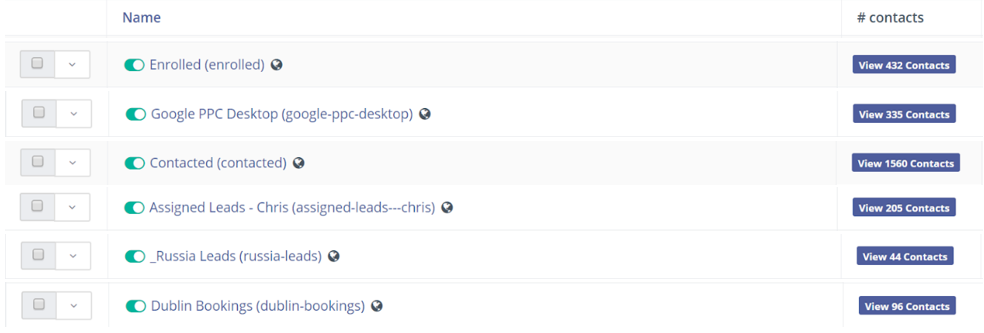
These lists help you build automated workflows that nurture prospects towards enrollment through personalized emails, text messages, and any other communication channels linked to your school’s CRM.
Example: An email workflow triggered by the completion of a certain website activity. With a CRM, you can optimally time these messages.
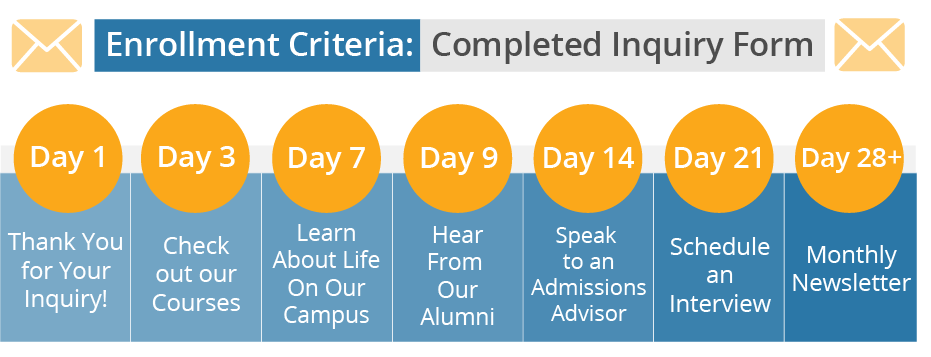
Your CRM can also help streamline communication between your school and its prospects by automatically assigning leads to different staff members when they submit a form on your website.
Example: A Mautic workflow that sends prospects an autoresponder and assigns a lead owner the moment they submit an inquiry.

Although schools can manually send messages to incoming leads and assign them to certain staff members, a CRM will allow you to automate these tasks to more efficiently and effectively communicate with prospective students.
3. Optimizing Your Website Using CRM for Student Recruitment
By integrating your school’s website to an education CRM, you open a window of possibilities for your website content. From CTAs to form fields, the data processing capabilities of your CRM can improve crucial web elements to encourage prospects to take the next step in the enrollment journey.
Personalizing Your Website Forms
Your school’s website is home to a number of crucial conversion activities – and integrating your site to a CRM takes these activities and makes them even better.
Of these, online forms may perhaps be the most important. After all, form submissions are likely the most direct way for prospects to signal their interest in your school apart from actually applying or booking.
By integrating your school’s website to a CRM, not only can you store information from these forms – many CRMs enable you to create custom forms to obtain the information you need in the most optimal way possible.
Example: Mautic’s form editor, which allows you to rearrange fields and choose different formats (such as drop-down menu, short answer, or multiple choice).

Adding your new form to your school’s website is simple with Mautic: all you need to do is copy and paste the embed code into your website editor:
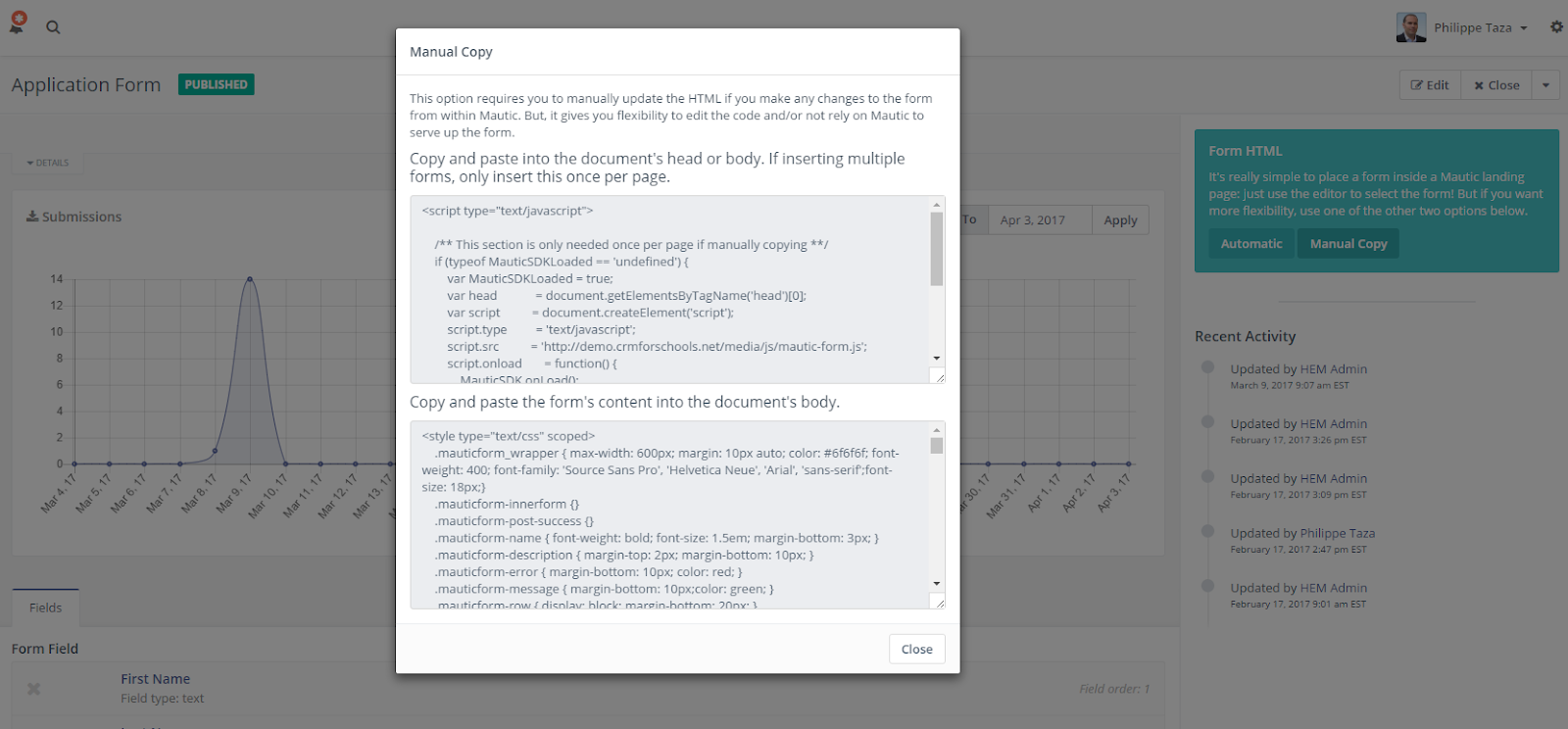
But your CRM can also go beyond simply creating forms. The beauty of storing information from all your contacts on your CRM is that you can use it to tailor website elements to your prospective students.
Some CRMs offer progressive profiling solutions, which allow you to collect new information about your prospects over time. Let’s say a prospect has already submitted a form on your site and is therefore in your CRM database. The next time they go to fill another form on your site, you can ask them for new information.
With progressive profiling, you aren’t redundantly asking for information. This keeps your conversion rates high and allows you to create rich, detailed contact profiles that can help you further personalize communication.
Example: On HubSpot you can select which form fields you want to display in place of previously captured contact information.
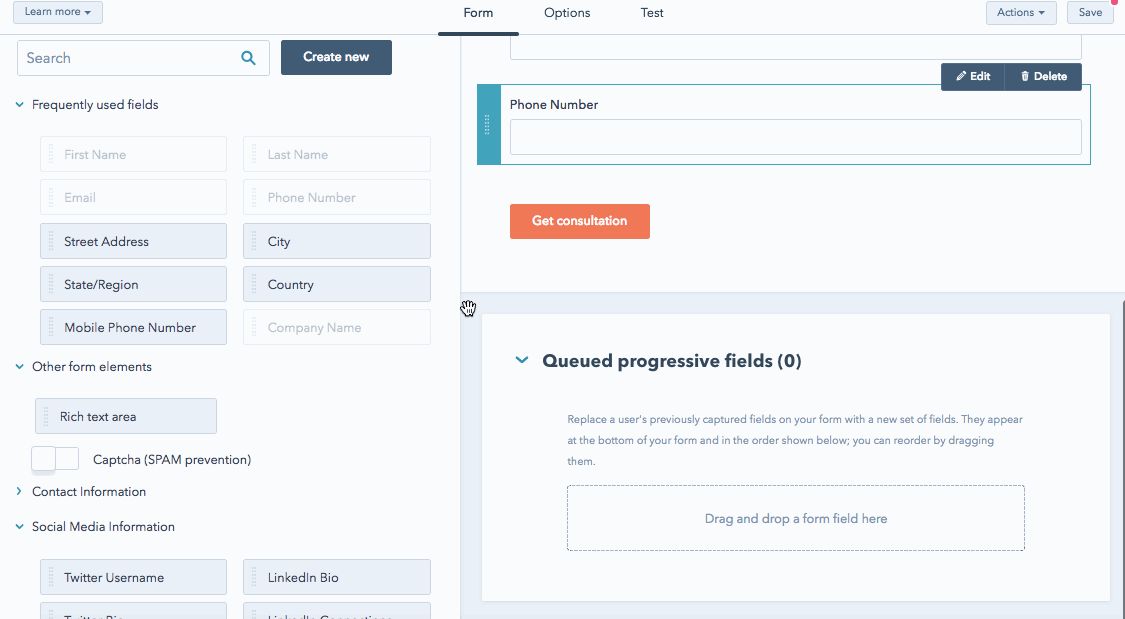
Your school can then test these progressive fields and add the completed form to its website using an embed code.
Creating Smart Calls to Action (CTAs)
Integrating your website to a CRM can also help you prompt prospects through the enrollment journey. With the help of smart CTAs, you can discern which prospects are interested in a certain program, which are ready to apply, and which are actually former students and may like to make a donation – and urge them to complete those goals.
If you integrate your school’s site to a CRM, this information is readily available and can help you create different CTAs for a variety of website visitors.
Example: Smart CTAs for prospects at different stages in the enrollment funnel, created in HubSpot. By default, visitors will see a Test your English CTA, but those who are market qualified – demonstrate interest in your school – are invited to take the next step in the process and create a quote. Sales qualified leads who are very likely to book are prompted to do just that by a Book your Course CTA.
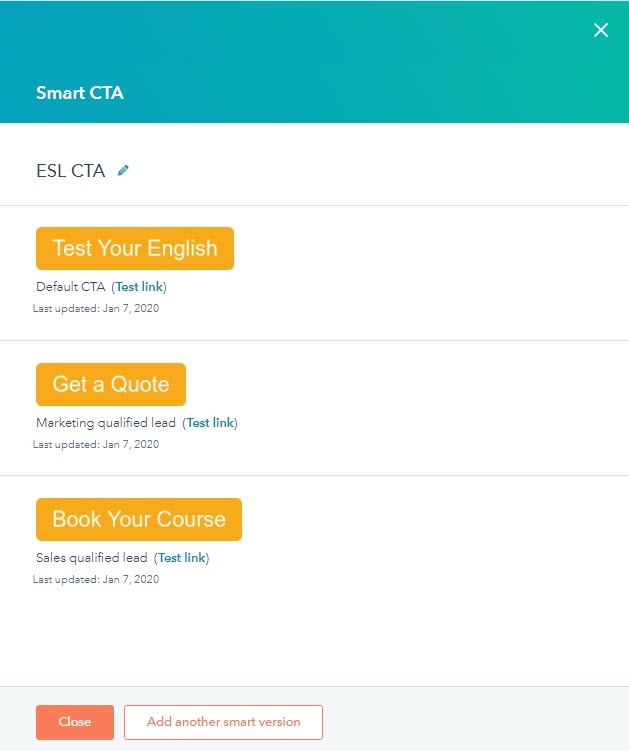
You can then add these smart CTAs to your school’s website, whether that be on a sidebar, at the end of blog posts, on program pages, or anywhere else.
4. How to Improve Event Management for Schools Through CRM Integration
From open houses to virtual tours, events – both online and offline – can significantly sway a prospect’s higher ed decision. In addition to their importance, these events can be resource-intensive, so schools want to make sure they’re as effective as possible.
If your school is looking to maximize registrations and ensure as many as possible actually attend, look no further than CRM for student recruitment.
When a school promotes an online information session, for instance, it may broadcast the event on various channels like social media and email, but all those interested will likely be brought back to the school’s website – or at least a landing page – to register. Therefore, if you integrate your website to a CRM, you can collect the registrants’ information on one platform.
For online events, specifically, many CRMs offer plugins for popular webinar hosting platforms. This feature allows prospects to click a CTA on your school’s website or landing page and automatically register for the event, while storing the data on your CRM.
Example: The process of integrating an online registration form with GoToWebinar through HubSpot. Notice how HubSpot also allows you to automatically send a follow-up email to those that register, as well as add them to a workflow. These optional add-ons make it easy to nurture a lead after they register for an event and increase their chances of attending.

Integrating your website to a CRM also enhances your school’s ability to monitor its events. You can easily asses how many of those that registered for your events went on to attend. You can also go a step further and measure how many of these leads went on to apply, and eventually enroll, at your school. It usually takes a substantial number of activities – from events to emails to phone calls – for a prospect to enroll, so the better you understand a typical prospect’s journey to enrollment, the better you can optimize this process.
5. Using Your School’s CRM for Long-Term Success
One challenge that many schools face is creating continuity within an admissions team. If a staff member leaves midway through recruitment season, how do you continue the conversations they had with prospects?
In that scenario, along with many others, integrating your website to a CRM proves highly beneficial. Since all contacts from your website are automatically inputted in your system, you not only have detailed records of their information – you have a log of all interactions they’ve had with your school.
Example: A contact’s call log in Mautic. The system logs email, SMS, skype history, as well as any meetings or tours a prospect has undertaken. Staff can also log notes and set tasks in each contact’s profile.
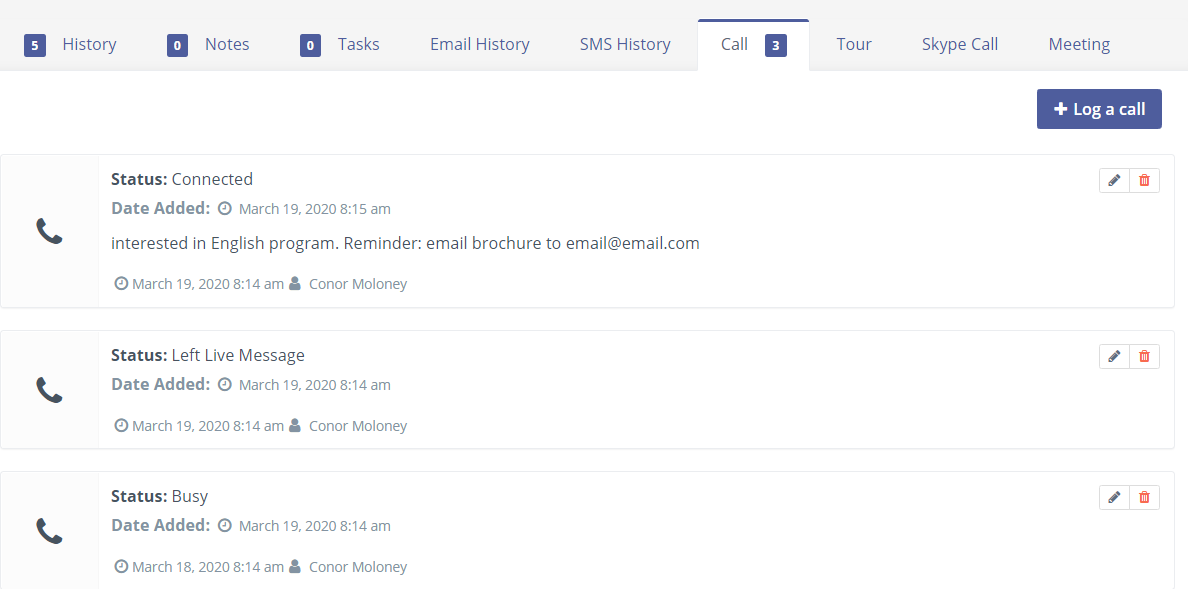
Having this information stored in your system allows different staff members to pick up where another left off in the follow-up process. You don’t have to worry about each team member having their own document or spreadsheets as all data is stored in one place.
In addition to continuity, this integration also allows you to monitor how effectively your website moves prospects through the enrollment journey so you can optimize it for long-term success.
Example: The ‘Request Type’ section of the Lead Conversion Report in Mautic. This report details which lead conversion activity most effectively drove enrollments. You can use this to compare the different resources you offer on you school’s website, from quizzes to quotes, to assess their long-term impact.

Your school can also analyze the role your website plays in your overall recruitment efforts in contrast to other digital marketing channels.
Example: The ‘Channel section’ of the Lead Conversion Report in Mautic

With the help of a CRM, your website can more effectively accomplish its purpose of attracting, engaging, and converting prospects into students. Your CRM is the link between these three crucial stages in the enrollment process, helping to efficiently and effectively nurture these website visitors towards enrollment.






